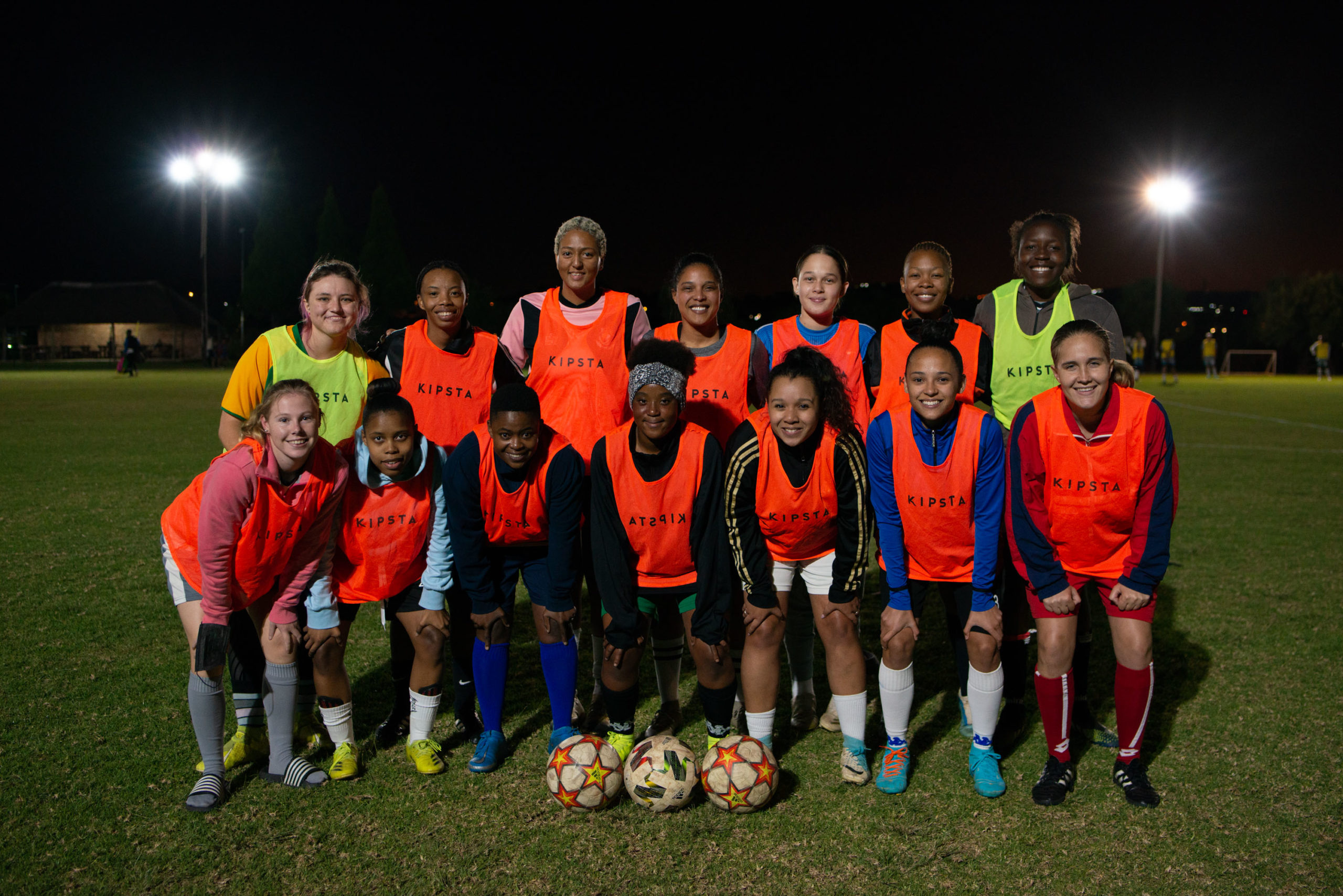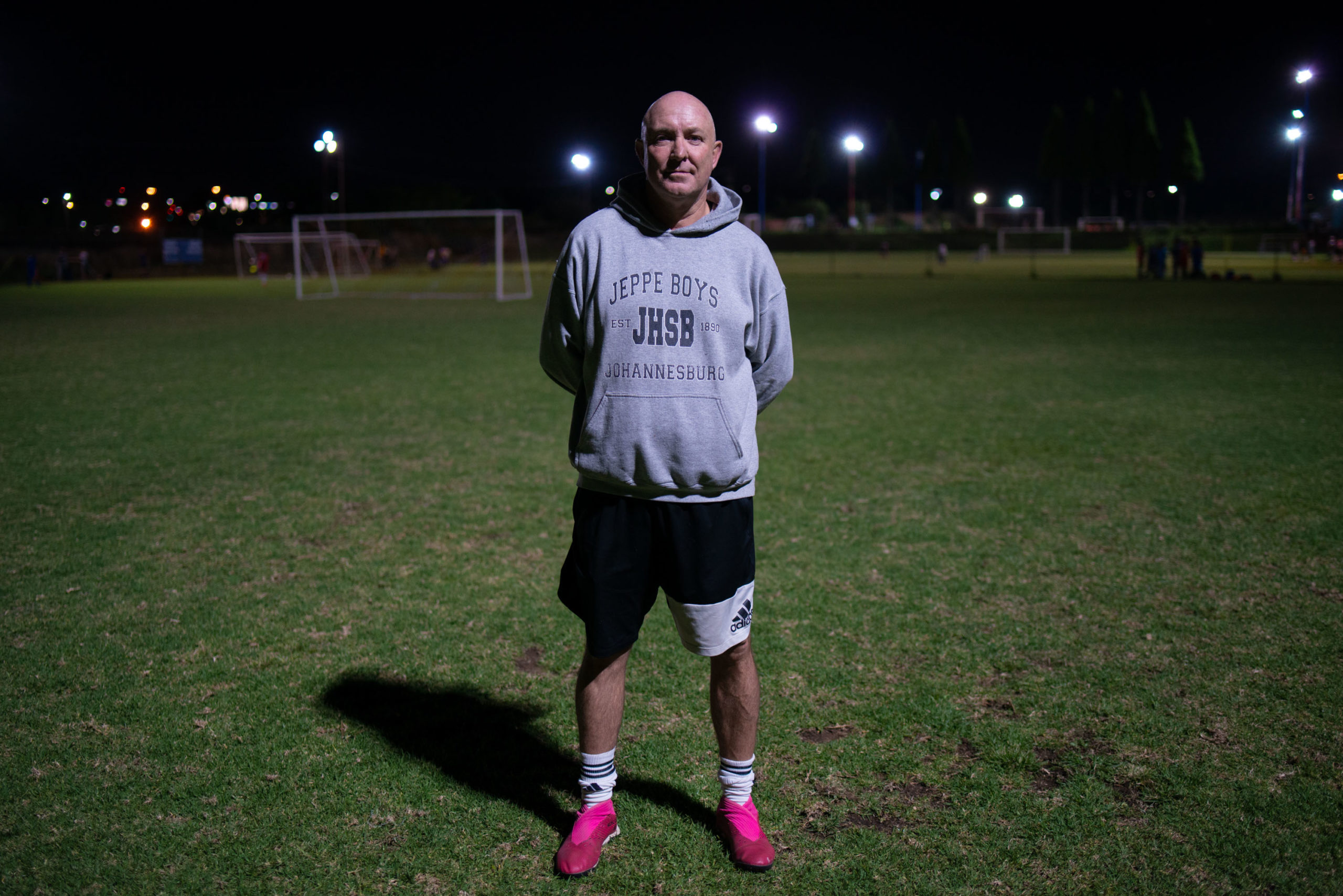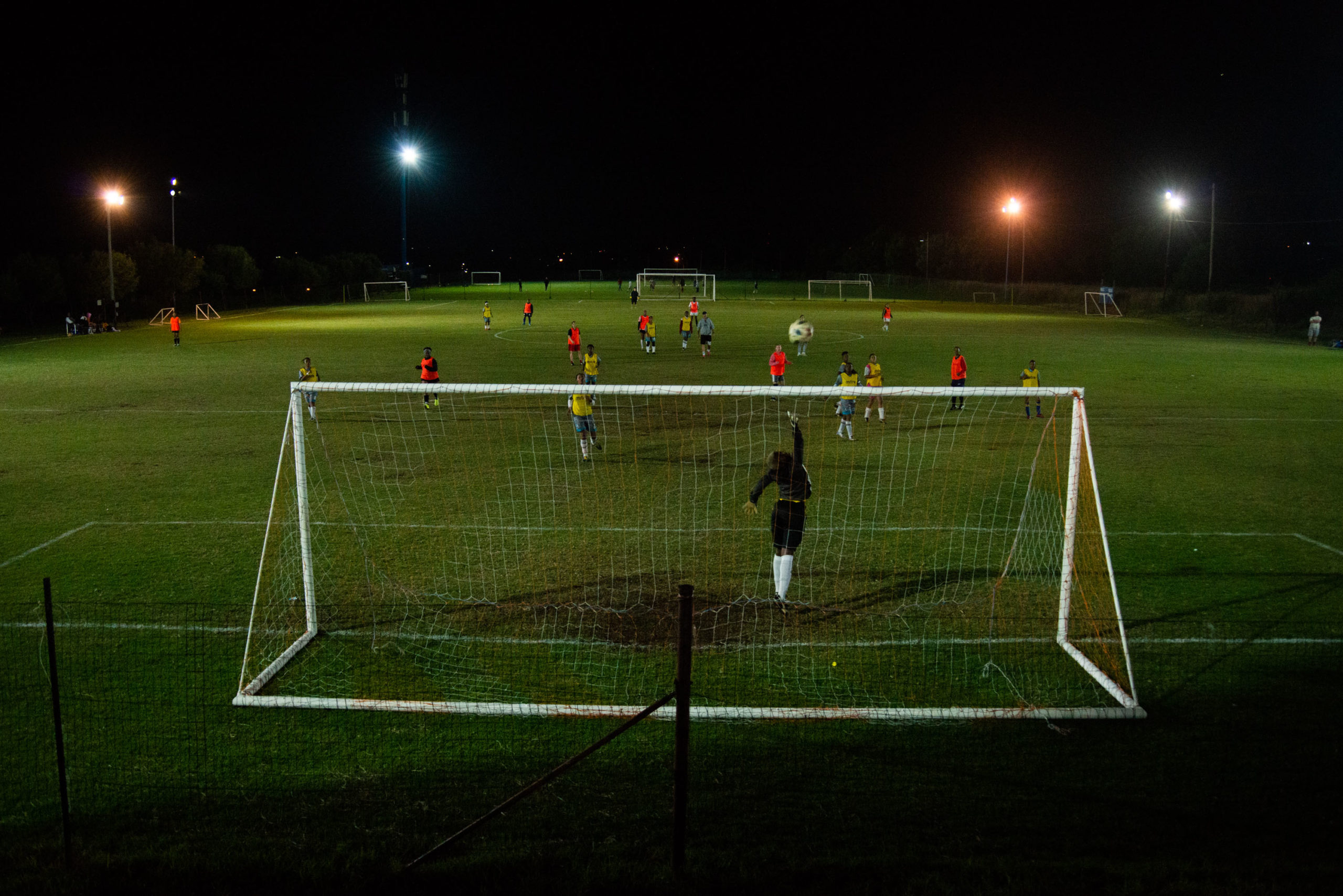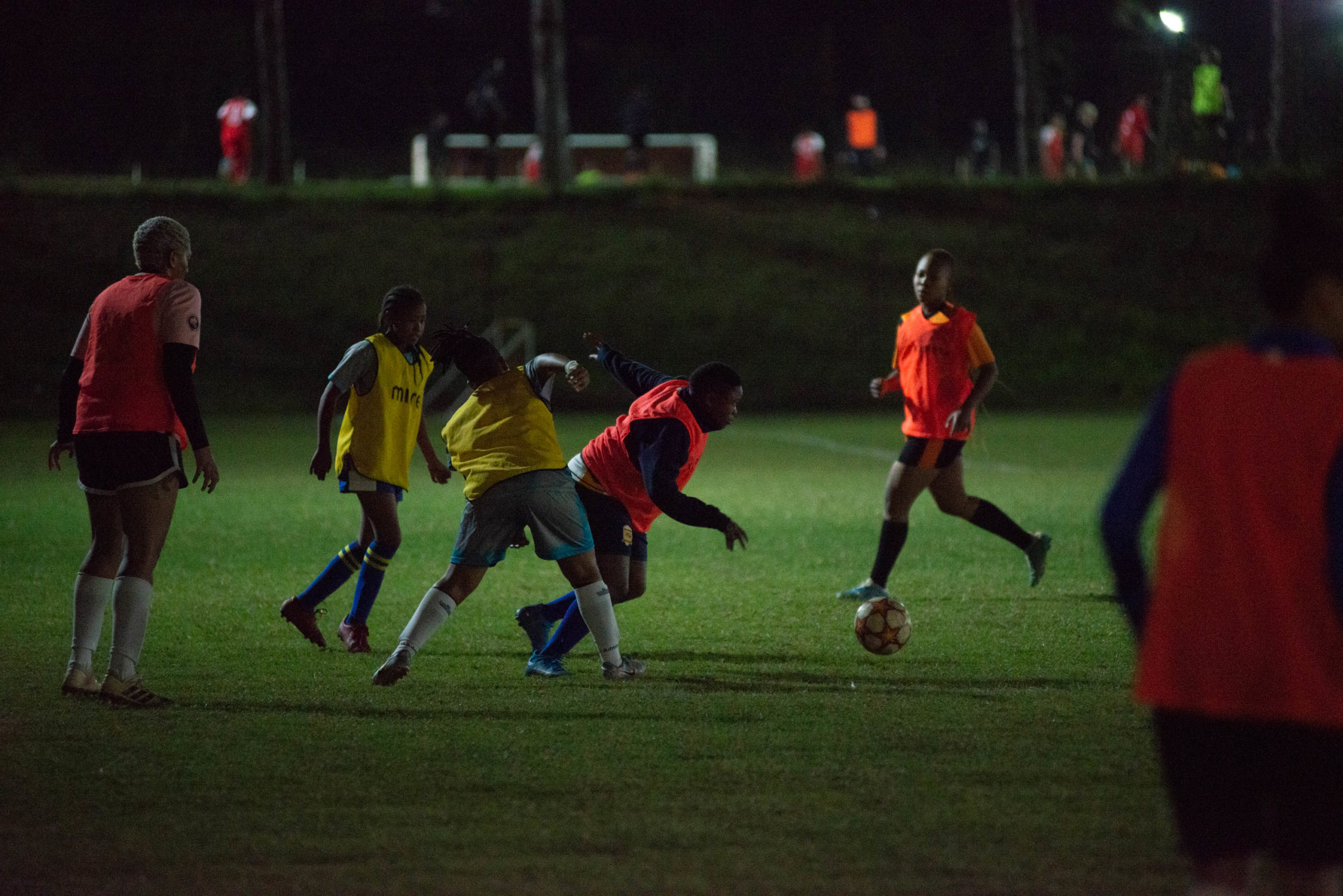Trials reflect growing interest in women’s football
Despite the Covid-19 pandemic taking its toll on the sport at school level, with kids missing crucial age-related developmental stages, there has been an uptick in girls wanting to play the game.
Author:
20 April 2022

It’s a wet and rainy Saturday in Johannesburg. The foul weather is more suited to a day indoors, but it does not deter scores of girls from attending the Under-15 and Under-17 Gauteng trials held by the South African Football Association (Safa).
The notice sent out to clubs, coaches, players and parents spoke of strict adherence to Covid-19 protocols. It said that only players, national team selectors and scouts would be granted access to the Panorama Sports Club in Roodepoort. However, dozens of proud parents and club coaches could not be deterred from attending and cheering on the hopefuls.
These are the first regional trials for girls in these age groups since the beginning of the pandemic and the excitement is palpable. Belinda Perreira has brought her daughter and is relishing the moment. “With Covid, the girls have missed out on a lot of training, and to get them back up to speed and into that physical form has been difficult,” she says.

Perreira’s daughter has been playing with a team of boys so that she did not fall behind in her development. “When you play with the boys, they are always bigger and stronger and so there is always that fear,” Perreira admits. “Perhaps it makes them tougher, but playing with girls is a different dynamic.”
For Selco Goodman, who has brought her daughter, the trials are a new experience and slightly overwhelming compared with school trials. “I don’t want to say the skills are not as enhanced at school, but if I look at this versus the school I would say these girls are top-notch and more advanced in terms of their skills development,” says Goodman.
She suggests it would be better “if schools could align or collaborate with somebody externally to teach the girls instead of just kicking a ball”, and says the focus should be on “discipline and getting the child to the next level”.
Making up for lost time
The successful development of players is closely linked to the quality of coaching that is available to them. Having already missed the best part of two years of focused training and match rhythm, many have raised their concern over the time lost.
“How do you correct it, even as a coach?” says Richard Walker, Panorama FC coach and committee member. “How do you correct an Under-8 that missed his Under-9 and is now at Under-10? The basics that are taught at Under-9 have been missed. It’s like missing a school year. That’s the biggest thing mentally. It was hard, especially for the kids.”
These sentiments are shared by Gae Lephalo, a Safa coach and selector. “In the women’s game, the two years of the pandemic have cost us a lot,” she says. “We were looked at as amateurs.”

Despite the disregard, Lephalo’s passion for the development of young girls pushes her to persist.
She is one of a number of women coaches in attendance and is clear on what she expects from the players. “We look at technique and the understanding of movement on the field at grassroots level.”
Her obligations on the day might be to spot talent, but coaching is instinctual to her and she passionately shouts instructions to the girls on the field.
Changing attitudes
A fundamental hindrance to the development of the women’s game at all levels has been sexist attitudes. This has resulted in little to no funding, especially at grassroots level. But the situation is changing in the view of Greg Green, a Rand Central Local Football Association administrator, women’s committee member and technical director of women’s football at Panorama.
“People have started to take women’s football a whole lot more seriously. A lot of clubs have now taken up that mantle and have started to take up women’s teams within their club, which is great,” he says.
“At regional level, Safa handed down the mandate many years ago that if you’re entering the Under-13 boys’ tournament, you must also enter the Under-13 girls’ tournament. That started making local football associations and regions take notice and say we need to develop our women’s structures. There has been progress, so sponsors are now prepared to put their money into women’s football.”

An increase in funding is sure to help lessen the challenges organisers face when staging trials for girls, such as organising transport. “It’s more difficult for girls to get around than boys,” says Goodman. “It’s easy for boys because they walk to the field, but girls can’t for safety reasons.”
Walker says there has been a significant increase in the number of girls playing football at Panorama FC despite the pandemic. “We were worried parents would go into individual sports, but in actual fact we have had such an uptake. I think everyone wants fresh air, to come and feel the grass again.”
And the time spent in isolation also had some good outcomes. “It’s given a lot of clubs and institutions time to take stock and to actually plan for getting back to sport in general,” Green says. “For us, we have been able to plan and go around and educate and promote the women’s game. As a result, you are starting to see a lot come into the sport now.”
More girls attending means there is a greater pool of talent for selectors to choose from. And for those who don’t get selected, Lephalo advises that they “go back to their schools as well as their teams to learn all these basic skills they need so that they can improve. They are still young. Next year when there are selections again, they still stand a chance.”
Growing interest in the women’s game is showing at grassroots level. Offensive stereotypes are slowly being replaced with genuine respect and awe for the women in football. Their time is now, and it starts with investing in young girls.
